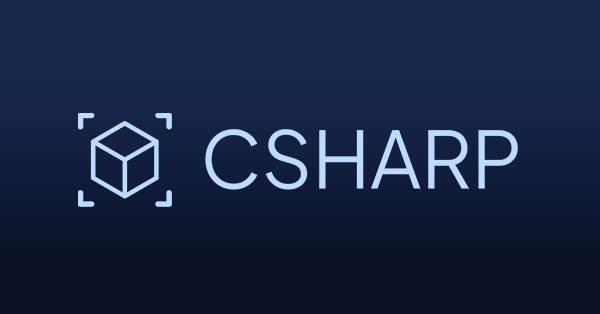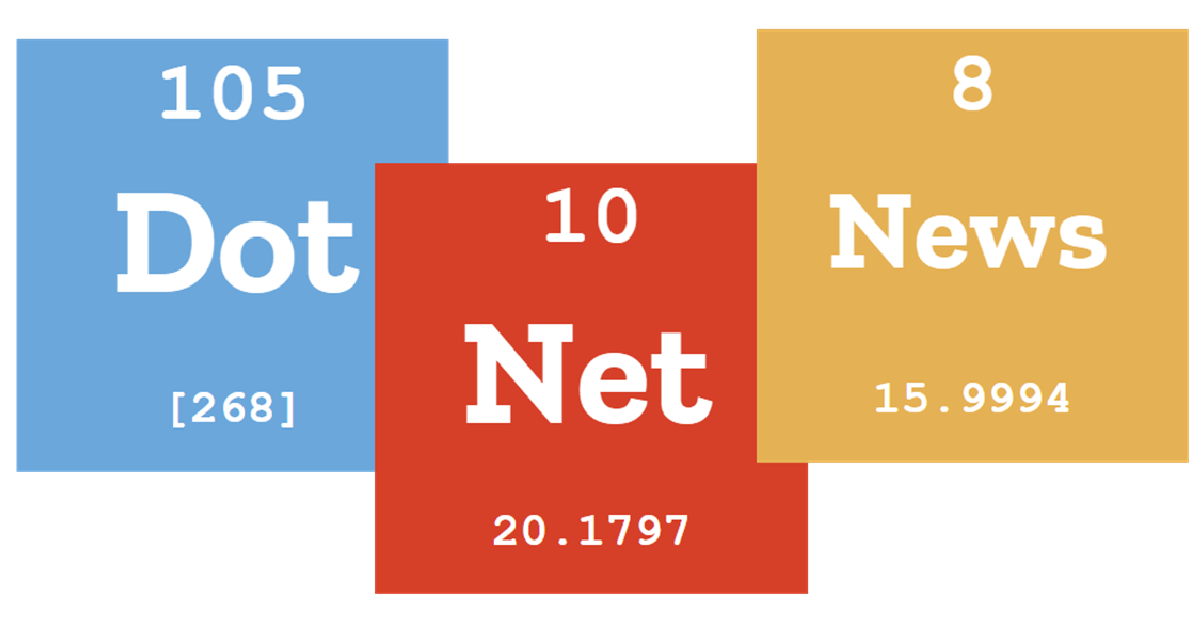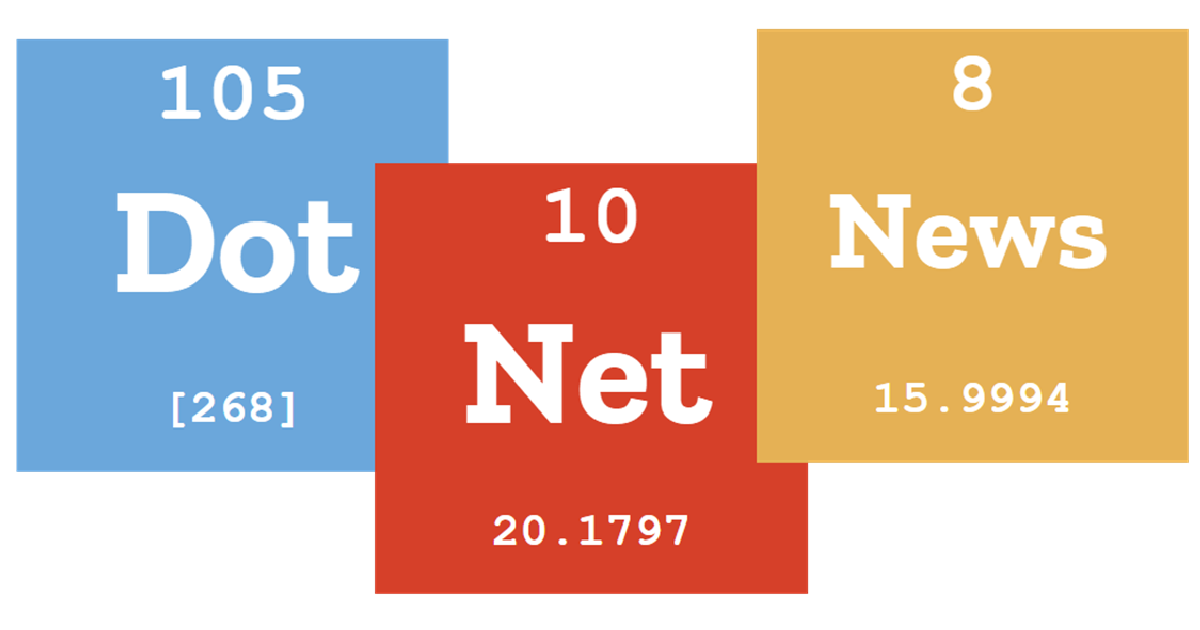As you dive into your Tuesday routine, it’s the perfect moment to optimize your .NET workflow—think of it as debugging your week before pressing F5. Today, we’re fine-tuning the .NET performance engine, navigating the intricate landscapes of GraphQL with .NET 9, MVC best practices, and C# best practices with the precision of a skilled developer. Whether you’re mastering Entity Framework Core or enhancing your ASP.NET Core projects, we’ve curated a selection of articles designed to sharpen your .NET skills and boost your efficiency. Grab that coffee, shift your mental gears, and accelerate through these insights—because the best solutions often come when you take a thoughtful pit stop in your development journey.
List of Article’s
Why You Should Think Twice Before Using Quartz.NET or Hangfire
|
|
https://medium.com/@metoz.florian/why-you-should-think-twice-before-using-quartz-net-or-hangfire-8d2a2ebdf8ae
In the evolving world of .NET development, tools like Quartz.NET and Hangfire have long been the go-to solutions for background job scheduling. However, with shifting dynamics in the open-source landscape, it’s important to approach these libraries with caution. While Quartz.NET and Hangfire offer robust job scheduling capabilities, recent developments in the open-source community suggest that the commercial licensing trend may alter the future viability of these tools. In this article, we explore the potential risks and considerations surrounding the use of these tools in modern .NET applications, helping developers make more informed decisions for long-term project sustainability.
|
|
 |
|
|
Pros and Cons of Using string.Intern() in Production
|
|
https://medium.com/write-a-catalyst/pros-and-cons-of-using-string-intern-in-production-567611726091
When working on large-scale .NET applications, memory optimization becomes crucial for maintaining performance and stability. One often overlooked feature in C# is string.Intern(), a method that can significantly reduce memory usage by reusing string instances. While string.Intern() offers great potential for improving memory efficiency, it comes with its own set of pros and cons, especially when used in production environments. This article dives into the key benefits, potential pitfalls, and real-world implementation strategies for string.Intern(), providing best practices for developers aiming to optimize memory usage in high-throughput systems.
|
|
 |
|
|
GraphQL with .NET 9: A Developer’s Guide to Smarter APIs
|
|
https://medium.com/@Adem_Korkmaz/graphql-with-net-9-a-developers-guide-to-smarter-apis-bbcad3bdc3db
In today’s rapidly evolving tech landscape, APIs are the backbone of modern applications, powering everything from web apps to IoT devices. While RESTful APIs have served us well for years, they often come with limitations, especially when handling complex data structures and optimizing performance. GraphQL has emerged as a powerful alternative, offering flexible, efficient queries with a single endpoint. This article explores how GraphQL revolutionizes API communication by allowing clients to request exactly the data they need, reducing over-fetching and under-fetching, and eliminating the need for multiple round-trip requests.
|
|
 |
|
|
Event Sourcing in .NET
|
|
https://davutdursun.medium.com/event-sourcing-in-net-549cb413cc21
Access without membership: Here
In the world of .NET development, event sourcing is gaining traction as a powerful architectural pattern for handling complex business logic and ensuring data consistency. In contrast to traditional CRUD operations, event sourcing focuses on persisting events rather than the current state of data, making it ideal for systems that need to track state changes over time. This article dives deep into how to implement event sourcing in .NET, offering practical code examples and explaining each step, from creating domain and aggregate structures to tracking changes with domain events. If you’re looking to build scalable and maintainable systems with a strong audit trail, this guide will walk you through every necessary detail.
|
|
 |
|
|
AutoMapper and MediatR Licensing Update
|
|
https://www.jimmybogard.com/automapper-and-mediatr-licensing-update/
In the world of open-source development, sustainability is a constant challenge. Popular libraries like AutoMapper and MediatR, which have been essential in the .NET ecosystem, are facing this challenge head-on. In this update, Jimmy Bogard shares his decision to transition these libraries to a dual licensing model to ensure long-term viability and continued innovation. This move reflects the shifting landscape of open-source sustainability and how libraries evolve to meet the needs of both individual developers and commercial enterprises. Explore how these changes will impact users and how dual licensing could shape the future of open-source .NET libraries.
|
|
 |
|
|
What is MVC?
|
|
https://medium.com/@chikeredev/what-is-mvc-9f5c9bff285d?source=rss——csharp-5
Model-View-Controller (MVC) is a fundamental design pattern used in software development to create maintainable, scalable, and flexible applications. Whether you’re building web applications, mobile apps, or complex systems, MVC provides a structured way to organize code by separating it into three interconnected components: the model, the view, and the controller. In this article, we’ll break down the basics of MVC architecture, explore how it simplifies development, and understand how it helps with separation of concerns in your projects.
|
|
 |
|
|
Building a Custom GraphQL Query Builder in .NET 9
|
|
https://medium.com/@thecodeman/building-a-custom-graphql-query-builder-in-net-9-0eea0cc877ef
GraphQL has become the go-to solution for modern API development, offering flexibility and efficiency that RESTful APIs often lack. However, when working with strongly typed languages like C# in .NET 9, building dynamic and reusable queries can be repetitive and error-prone. In this guide, we’ll walk you through creating a custom GraphQL query builder in .NET 9, focusing on minimal APIs and dependency injection for a cleaner, maintainable solution. This approach simplifies the construction of GraphQL requests, reduces hardcoding, and streamlines integration, ensuring your application remains scalable and flexible. Whether you’re fetching user details, orders, or related data, this method will help you optimize GraphQL operations in your .NET projects.
|
|
 |
|
|
Observability in ASP.NET Core with OpenTelemetry & Azure Monitor
|
|
https://www.c-sharpcorner.com/article/observability-in-asp-net-core-with-opentelemetry-azure-monitor/
In today’s rapidly evolving software landscape, observability is paramount for ensuring smooth, reliable operations. OpenTelemetry in ASP.NET Core provides a powerful framework for collecting and managing telemetry data like logs, metrics, and traces. By integrating Azure Monitor, developers can gain deep insights into application performance, enhance distributed tracing, and enable real-time monitoring. This article explores how to implement OpenTelemetry in ASP.NET Core for comprehensive observability, from metrics tracking to custom log queries. Learn how to set up Azure Application Insights, configure alerts, and dive into advanced telemetry patterns for a robust monitoring solution.
|
|
 |
|
|
Listing Information from the Local DB in MAUI .NET 9 [GamesCatalog] – Part 15
|
|
https://www.c-sharpcorner.com/article/listing-information-from-the-local-db-in-maui-net-9-gamescatalog-part-15/
Building dynamic and responsive applications with .NET MAUI has never been easier. In this GamesCatalog Part 15, we’ll guide you through the process of listing and managing local game data seamlessly. By utilizing MVVM architecture and powerful local database querying techniques, this tutorial shows you how to efficiently list game data in your MAUI application. Learn how to bind data, handle user interactions, and display game details such as release dates, platforms, and ratings—all while ensuring smooth local storage management. Whether you’re a beginner or an experienced developer, this comprehensive guide will enhance your .NET MAUI development skills.
|
|
 |
|
|
C# Comments: Write Notes Now, Thank Yourself Later!
|
|
https://medium.com/@fulton_shaun/c-comments-write-notes-now-thank-yourself-later-f913e974ec82
In C#, comments play a crucial role in writing clear, maintainable, and efficient code. As developers, we often assume we’ll remember the purpose behind every variable or function call, but the truth is, without comments, future debugging and collaboration can become a headache. This article dives into the importance of commenting your code in C#, offering best practices for using single-line and multi-line comments effectively. Whether you’re working on solo projects or with a team, adopting a comment-driven approach will help you write cleaner, more understandable code and future-proof your applications.
|
|
 |
|
|
Building a Feedback‑Driven PromptWizard in .NET
|
|
https://medium.com/@eneshoxha_65350/building-a-feedback-driven-promptwizard-in-net-526e7e578572
In the world of AI and machine learning, refining prompts is an essential part of improving model performance. This article explores how to build a feedback-driven PromptWizard in .NET, leveraging the Cortex Data Framework to create an automated, self-evolving system. By using a generate-critique-refine loop, we show how PromptWizard can enhance prompts through a feedback mechanism that allows for continuous improvement. Learn how to implement feedback loops, dependency injection, and real-time telemetry to build a more efficient and scalable solution.
|
|
 |
|
|
20 Insanely Useful C# 9.0 Tips That Will Instantly Upgrade Your Code
|
|
https://medium.com/@metoz.florian/20-insanely-useful-c-9-0-tips-that-will-instantly-upgrade-your-code-49b4cfcaeb48
Unlock the power of .NET 9 and C# 13 with these performance-boosting tips that will transform your coding experience. From string concatenation to lazy evaluation, these .NET tips will help you write faster, cleaner, and more efficient code. Whether you’re maintaining legacy systems or starting fresh with .NET 9, these strategies are essential for optimizing performance, enhancing readability, and keeping your codebase modern and scalable. Let’s dive into 20 practical, real-world techniques to instantly improve your development workflow.
|
|
 |
|
|
How to Build an Advanced Data Crawler in .NET
|
|
https://medium.com/asp-dotnet/how-to-build-an-advanced-data-crawler-in-net-86ea9db03b34
The power of web scraping and data crawling with .NET as we guide you through the creation of an advanced data crawler using C#, .NET 8, and the HtmlAgilityPack. Whether you’re an aspiring software engineer or a seasoned tech entrepreneur, this step-by-step tutorial will walk you through the entire process of building an intelligent crawler that respects best practices in web scraping. Learn how to navigate websites, extract crucial data, and store it efficiently using SQLite and Entity Framework Core. By the end of this guide, you’ll be ready to tackle real-world scraping challenges and develop a robust web crawler.
|
|
 |
|
|
How to Publish ASP.NET Core MVC Project.NET 8 with View Files
|
|
https://www.c-sharpcorner.com/article/how-to-publish-asp-net-core-mvc-project-net-8-with-view-files/
Publishing an ASP.NET Core MVC project with CSHTML files is an essential task for developers working with .NET 8. In this detailed guide, we walk you through the step-by-step process of ensuring your views are published alongside your project, all while maintaining best practices for deployment. Whether you’re using Visual Studio 2022 or dealing with complex MVC settings, this tutorial covers everything from project setup to configuring Razor views and resolving common publishing errors. Follow along and learn how to deploy your ASP.NET Core MVC project smoothly with full view file support.
|
|
 |
|
|
How to Add a Local NuGet (.nupkg) to Your .NET Project
|
|
https://jonathanantoine.medium.com/how-to-add-a-local-nuget-nupkg-to-your-net-project-0254d222e2a6
Managing NuGet packages in your .NET project is made simpler when you leverage local sources. If you’re developing custom libraries and want to use them in your projects without publishing them to a NuGet server, this guide will show you how to add a local NuGet package source to your project. By creating a NuGet.config file and setting a local path, you can seamlessly integrate .nupkg files into your development process. Whether you’re using Azure DevOps or a local repository, this step-by-step approach ensures a smooth experience with package management in .NET.
|
|
 |
|
|
Rock, Paper, Scissors in C# — Let’s Code It
|
|
https://medium.com/@fulton_shaun/rock-paper-scissors-in-c-lets-code-it-1be82088bbe9
Mastering C# programming can be both fun and educational when you tackle simple projects like a Rock, Paper, Scissors game. In this article, we walk you through the process of building this classic game in C# using essential concepts like user input, random number generation, and if-else logic. Perfect for beginners, this project helps you grasp the basics of game development while refining your C# coding skills. Whether you’re creating games for practice or just having fun, this guide will walk you through the first steps in C# game development.
|
|
 |
|
|
IEnumerable vs IQueryable in C#
|
|
https://medium.com/@shreyans_padmani/-af4d74208a29
If you’re working with LINQ in C#, you’ve likely encountered IEnumerable and IQueryable. Understanding the key differences between these two data query techniques is essential for writing efficient and scalable C# code, especially when handling large datasets. While both are used for querying collections, they perform differently depending on whether you’re working with in-memory data or querying databases. In this article, we’ll dive into the performance implications, characteristics, and best-use scenarios for IEnumerable and IQueryable to help you make the right choice for your project.
|
|
 |
|
|
Azure Files: More performance, more control, more value for your file data
|
|
Azure Files: More performance, more control, more value for your file data
In today’s fast-paced digital landscape, businesses of all sizes are grappling with skyrocketing data volumes and the demand for scalable, cost-effective file storage solutions. Azure Files offers a fully managed cloud file share service that not only simplifies the way businesses manage their file data but also improves performance, security, and cost optimization. This article dives into Azure Files’ new enhancements, from serverless cloud file shares to advanced security features and hybrid cloud support. Let’s explore how these upgrades can help streamline your storage management while reducing overhead and boosting productivity.
|
|
 |
|
|
Understanding JWT Authentication and Authorization in ASP.NET
|
|
https://medium.com/@waheedarshad239/understanding-jwt-authentication-and-authorization-in-asp-net-411a82934da9
In modern web applications, security is crucial, and authentication and authorization are fundamental to safeguarding user data. One of the most effective and widely used methods for handling user authentication and authorization is JWT (JSON Web Tokens). In this article, we delve into the key concepts of JWT authentication in ASP.NET, providing you with the knowledge to seamlessly integrate JWT-based security into your .NET applications. Learn how JWTs work, how they are structured, and how to implement them for both authentication and authorization in ASP.NET Core applications.
|
|
 |
|
|
Why I Rewrote a Python Script in C# — and It Was 10x Faster
|
|
https://medium.com/@nagarajvela/why-i-rewrote-a-python-script-in-c-and-it-was-10x-faster-4391fa6834e6
In the world of software development, performance matters — especially when working with large datasets. In this article, I share the story of how a simple Python script was rewritten in C#, resulting in a 10x performance boost. Whether you’re tackling data processing or seeking to optimize your applications, understanding the key differences between Python and C# can help you choose the right language for the job. Learn how C#’s structure and efficiency can outpace Python in certain use cases, and why making the switch can save you both time and resources in the long run.
|
|
 |
|
|
TinyResult: Simplify Result Pattern Usage in .NET Projects — EN
|
|
https://blog.muratdinc.dev/tinyresult-simplify-result-pattern-usage-in-net-projects-en-bf37e2c7f9bc
In the world of .NET development, handling success and failure outcomes cleanly and efficiently is key. Enter TinyResult, a minimalistic yet powerful library that simplifies result pattern usage in .NET projects. If you’ve ever struggled with overly complex result management systems or unwanted overhead, TinyResult provides a lightweight solution to handle success, failure, and error scenarios seamlessly. Whether you’re aiming for better error handling, validation, or asynchronous workflows, this simple library offers everything you need to improve code readability and performance.
|
|
 |
|
|
What is Middleware in ASP.NET Core?
|
|
https://medium.com/@manisankardixit/what-is-middleware-in-asp-net-core-5805c9276ec9
Understanding middleware in ASP.NET Core is essential for building robust, scalable, and maintainable web applications. Middleware plays a crucial role in ASP.NET Core’s HTTP request pipeline, enabling developers to modify requests and responses, implement custom logic, and enhance security. Whether you’re handling global exception management, request logging, or adding custom functionality, middleware empowers you to fine-tune the processing flow of HTTP requests. In this article, we’ll dive deep into the concept of middleware in ASP.NET Core, explain how to create custom middleware, and explore practical scenarios where middleware can streamline your application.
|
|
 |
|
|
C#10 Implicit Using: Clean Up Your Code!
|
|
https://medium.com/womenintechnology/c-10-implicit-using-clean-up-your-code-4e7ebe1e5f61
C# 10 introduces a game-changing feature called Implicit Using that significantly cleans up your code and boosts productivity. Gone are the days of repeatedly writing using statements for commonly used libraries like System in every file. With Implicit Using, these commonly used namespaces are automatically included, reducing boilerplate code and enhancing the readability of your project. This article explores the C# 10 Implicit Using feature and how it can simplify your coding workflow, making it cleaner and more efficient.
|
|
 |
|
|
Building a Modern C# Portfolio: Projects That Demonstrate 2025 Skills
|
|
https://medium.com/@vikpoca/building-a-modern-c-portfolio-projects-that-demonstrate-2025-skills-5763b2c4fbf8
In the rapidly evolving world of software development, building a modern C# portfolio is more important than ever. As the demand for skilled C# developers grows, your portfolio must reflect not only your technical expertise but also your ability to adapt to emerging technologies. This article explores key C# portfolio projects that will demonstrate your proficiency in cloud computing, microservices, AI integration, and other cutting-edge areas. Whether you’re a seasoned developer or just starting out, building projects that align with industry trends will elevate your C# CV and ensure you stand out in 2025.
|
|
 |
|
|



















Leave a Reply